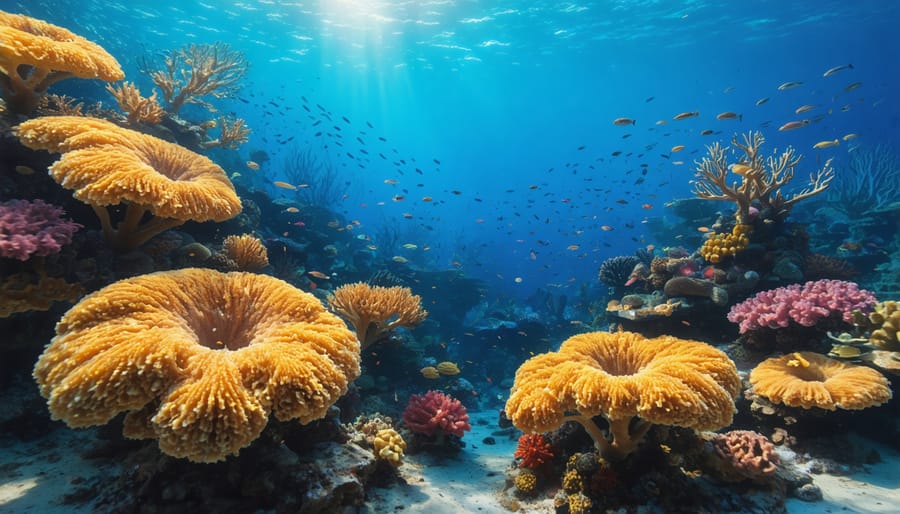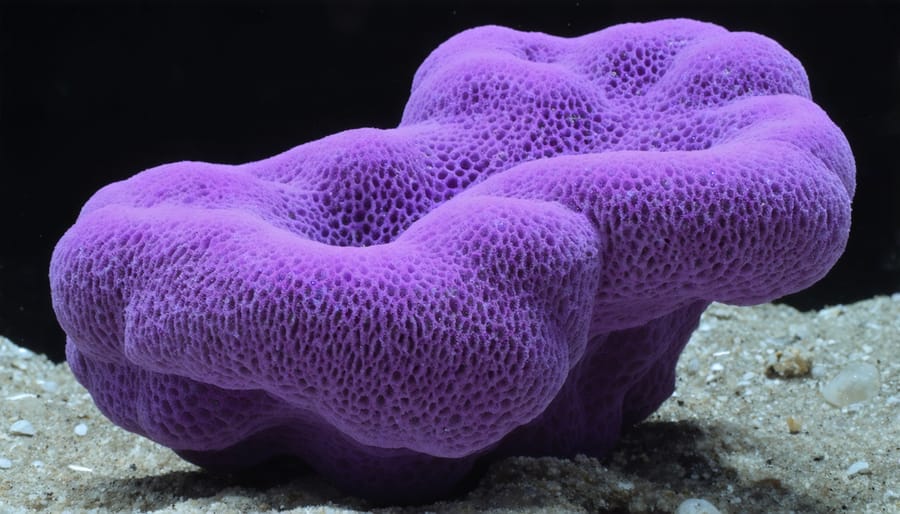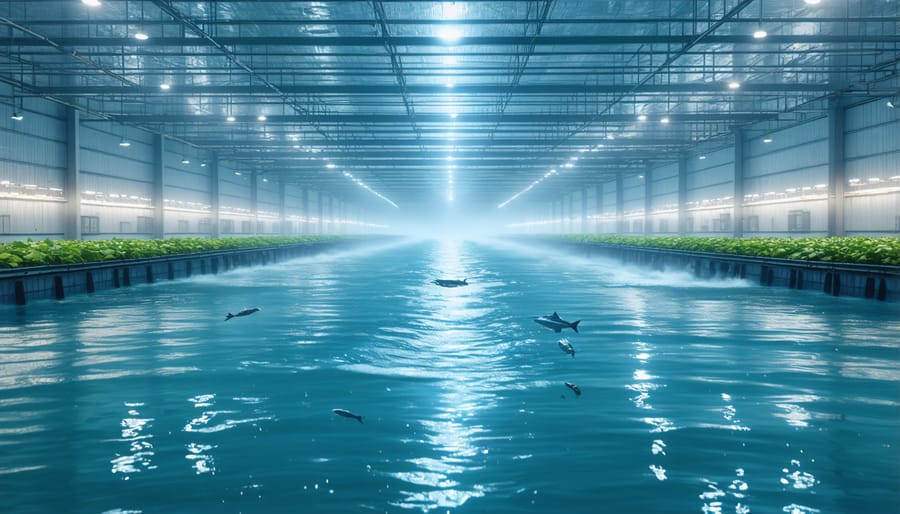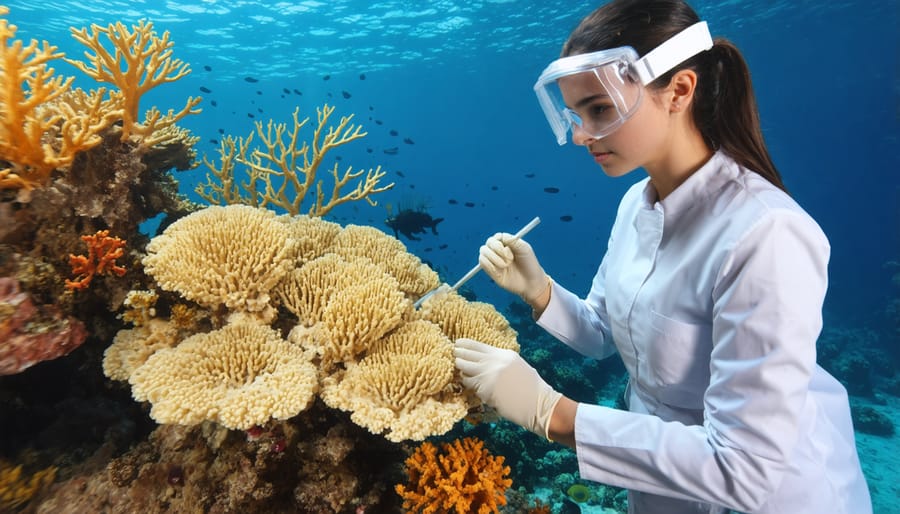
Marine biotechnology stands at the forefront of ocean innovation, transforming how we harness the sea’s vast potential for human and environmental benefit. From life-saving drugs derived from deep-sea organisms to sustainable aquaculture solutions, marine genomics research has unveiled remarkable applications that bridge conservation with technological advancement. Today’s marine biotechnology encompasses everything from coral reef restoration using engineered probiotics to the development of biodegradable plastics from seaweed polymers, demonstrating nature’s capacity to solve modern challenges.
This rapidly evolving field offers solutions to some of our most pressing global issues: discovering novel antibiotics from marine microorganisms, developing sustainable fish farming techniques, and creating renewable biofuels from algae. These innovations not only advance scientific understanding but also provide practical tools for ocean conservation and sustainable resource management. As we explore these marine biotechnology applications, we’ll discover how scientists are unlocking the ocean’s secrets while preserving its delicate ecosystems for future generations.
Pharmaceutical Discoveries from the Deep

Cancer-Fighting Sea Sponges
Marine sponges have emerged as one of the most promising sources of anti-cancer compounds in marine biotechnology. The breakthrough discovery came from the Caribbean sea sponge Tectitethya crypta, which led to the development of Ara-C (Cytarabine), now a standard treatment for leukemia and lymphoma. This success sparked a wave of research into marine sponges worldwide.
Dr. Maria Rodriguez, a marine biochemist who has spent two decades studying sea sponges, explains: “These ancient organisms have evolved complex chemical defenses over millions of years. What protects them from predators often proves valuable in fighting cancer cells.”
The most notable recent discovery is E7389 (Eribulin), derived from the Japanese sea sponge Halichondria okadai. This compound has shown remarkable success in treating metastatic breast cancer and is now approved for clinical use in multiple countries. The development process, from discovery to approval, demonstrates the potential of marine biotechnology in modern medicine.
Researchers continue to identify promising compounds from various sponge species. For instance, the Mediterranean sponge Crambe crambe produces crambescidin, which shows potential against lung cancer cells. Conservation efforts are crucial, as these valuable species face threats from climate change and ocean acidification.
Scientists are now developing sustainable methods to synthesize these compounds in laboratories, reducing the need to harvest wild sponges while ensuring a steady supply of these life-saving medications.
Pain Management from Cone Snail Venom
One of the most remarkable discoveries in marine biotechnology comes from an unlikely source: the cone snail. These beautiful but deadly mollusks produce a potent venom that has led to groundbreaking developments in pain management. Scientists have isolated specific compounds called conotoxins from the snail’s venom, which have proven to be up to 1,000 times more powerful than traditional opioids, without the risk of addiction.
The most notable success story is Ziconotide, marketed as Prialt, derived from the marine cone snail Conus magus. This medication has become a lifeline for patients with severe chronic pain, particularly those who don’t respond to conventional treatments. What makes this discovery even more fascinating is that cone snail venom works through a unique mechanism, blocking specific pain signals in the nervous system while leaving other neural pathways unaffected.
Marine biologists working with these creatures must exercise extreme caution, as a single sting can be fatal to humans. However, their careful research has revealed that different cone snail species produce distinct variations of venom compounds, potentially leading to new pain management solutions. Current research focuses on developing synthetic versions of these compounds and identifying other beneficial applications in neuroscience.
This breakthrough exemplifies how marine organisms can provide solutions to human medical challenges while highlighting the importance of preserving marine biodiversity for future discoveries.
Sustainable Aquaculture Solutions

Genetic Enhancement for Disease Resistance
Modern marine biotechnology has revolutionized aquaculture through innovative genetic enhancement techniques that focus on developing disease-resistant fish populations. By identifying and understanding specific genes responsible for immune responses, scientists can now breed healthier fish stocks that naturally resist common pathogens and parasites.
This advancement has significantly reduced the need for antibiotics in fish farming, leading to more sustainable aquaculture practices. For example, researchers have successfully developed salmon strains with enhanced resistance to infectious salmon anemia (ISA), a devastating viral disease that once threatened entire farming operations.
The process involves careful selective breeding programs that utilize DNA markers to identify fish with naturally stronger immune systems. These individuals are then bred to create offspring with improved disease resistance. This approach maintains genetic diversity while strengthening the overall health of farmed fish populations.
Recent breakthroughs include the development of rainbow trout with increased resistance to bacterial cold water disease and sea bream that better withstand common Mediterranean pathogens. These achievements demonstrate how biotechnology can address critical challenges in aquaculture while supporting environmental sustainability.
Marine biologist Dr. Sarah Chen, who leads research at the Pacific Aquaculture Institute, shares: “We’re seeing remarkable success rates with these enhanced breeding programs. Fish mortality rates have decreased by up to 40% in some species, while maintaining the natural genetic integrity of the populations.”
This technology not only benefits aquaculture operations but also helps protect wild fish populations by reducing the risk of disease transmission between farmed and wild stocks.
Microalgae-Based Fish Feed
The growing demand for aquaculture has led to increased pressure on wild fish populations used for fish meal production. Microalgae-based fish feed represents a sustainable alternative that’s revolutionizing the aquaculture industry through marine biotechnology. These microscopic organisms are rich in essential nutrients, proteins, and omega-3 fatty acids that fish need for healthy growth and development.
Scientists have successfully identified and cultivated specific strains of microalgae that match or exceed the nutritional profile of traditional fish meal. Species like Nannochloropsis and Schizochytrium are particularly promising, as they can be grown in controlled environments without competing for agricultural land or marine resources.
The production process involves carefully controlled photobioreactors where microalgae are cultivated under optimal conditions. Advanced biotechnology techniques allow researchers to enhance the nutritional content of these organisms, making them more efficient as feed alternatives. Some strains are even engineered to produce higher levels of specific nutrients that farmed fish require.
Beyond nutrition, microalgae-based feeds offer environmental benefits. They require significantly less water than traditional agriculture, can be produced year-round, and have a smaller carbon footprint compared to fishing for feed stock. Many aquaculture facilities are now integrating on-site microalgae production systems, creating a more sustainable and self-sufficient operation.
Marine biologist Dr. Sarah Chen, who pioneered several microalgae cultivation techniques, notes: “We’re seeing a paradigm shift in aquaculture. Microalgae feeds aren’t just alternatives; they’re becoming the new standard for sustainable fish farming. The technology keeps improving, and costs are decreasing, making it increasingly accessible to farmers worldwide.”
Environmental Protection Applications
Oil-Eating Bacteria
Oil-eating bacteria represent one of nature’s most remarkable solutions to marine pollution. These specialized microorganisms, particularly species like Alcanivorax borkumensis and Oleispira antarctica, have evolved the ability to break down and digest hydrocarbon compounds found in crude oil. During oil spills, these bacteria naturally multiply and consume the pollutants, converting them into less harmful substances.
Marine biotechnologists have harnessed this natural process by identifying and cultivating the most efficient oil-degrading bacterial strains. When applied to oil spills, these enhanced bacterial populations can accelerate the cleanup process significantly. For instance, during the Deepwater Horizon oil spill in 2010, scientists observed these bacteria consuming up to 40% of the hydrocarbons within weeks of the disaster.
The process, known as bioremediation, involves carefully introducing these bacteria to affected areas along with nutrients that boost their growth and oil-degrading capabilities. This method is particularly valuable because it’s environmentally friendly, cost-effective, and doesn’t introduce additional chemicals into marine ecosystems.
Recent advances in genetic research have allowed scientists to better understand the metabolic pathways these bacteria use to break down oil. This knowledge has led to the development of more efficient bacterial strains and improved deployment methods, making biological oil spill cleanup more effective than ever before.
Coral Reef Restoration
Biotechnology is revolutionizing coral reef restoration efforts, offering hope for these vital marine ecosystems. Scientists are employing advanced techniques like micro-fragmentation, where small coral pieces are cultivated in controlled environments to accelerate growth rates up to 50 times faster than natural processes. These fragments are then strategically transplanted to damaged reef areas, supporting comprehensive coastal ecosystem management initiatives.
Innovative genetic techniques allow researchers to identify and propagate coral species with enhanced resilience to environmental stressors. By studying heat-tolerant coral varieties, scientists can develop more robust populations better equipped to survive warming ocean temperatures. Lab-cultured symbiotic algae are being introduced to bleached corals, helping them recover and adapt to changing conditions.
Marine biotechnologists are also exploring the potential of cryopreservation, storing coral genetic material in specialized biobanks. This technology creates a safety net for endangered species and maintains genetic diversity for future restoration projects. Additionally, 3D-printed artificial reef structures, enhanced with biocompatible materials, provide optimal surfaces for coral attachment and growth.
Community-based restoration programs are incorporating these biotechnology solutions, creating “coral nurseries” where local conservationists and volunteers can participate in hands-on restoration work. These initiatives not only support reef recovery but also provide valuable data for ongoing research and development of more effective restoration techniques.

Biofuel Production from Marine Sources
Marine organisms are emerging as promising sources for sustainable biofuel production, offering innovative solutions to our growing energy needs while reducing dependency on fossil fuels. Microalgae, in particular, have garnered significant attention due to their rapid growth rates and high lipid content, making them ideal candidates for biodiesel production.
These microscopic powerhouses can produce up to 60 times more oil per acre than traditional land-based crops like corn or soybeans. Moreover, they don’t compete with food crops for arable land and can be cultivated in seawater, reducing freshwater consumption. Companies like Algenol and Sapphire Energy have successfully demonstrated large-scale algal biofuel production, though challenges in cost-effectiveness remain.
Macroalgae, or seaweed, presents another exciting avenue for biofuel production. Species like Saccharina japonica and Ulva lactuca can be fermented to produce bioethanol or processed into biogas through anaerobic digestion. Several coastal communities in Asia have already implemented seaweed-based biofuel projects, creating sustainable energy while providing economic opportunities for local fishermen.
Marine bacteria also play a crucial role in biofuel innovation. Certain species can convert organic waste into hydrogen or other biofuels through metabolic processes. Researchers have identified promising strains that can operate in extreme conditions, potentially leading to more efficient and resilient production methods.
The development of marine-based biofuels faces several challenges, including scaling up production, reducing costs, and optimizing cultivation techniques. However, ongoing research and technological advances are making these solutions increasingly viable. Projects like the Marine Bioenergy Program demonstrate how collaboration between scientists, industry partners, and local communities can accelerate progress in this field.
As we continue to seek sustainable alternatives to fossil fuels, marine biotechnology offers hope for a cleaner energy future while supporting marine ecosystem conservation through responsible cultivation practices.
The future of marine biotechnology stands at an exciting crossroads, offering unprecedented opportunities for both scientific advancement and environmental stewardship. As we’ve explored throughout this article, the applications of marine biotechnology extend far beyond traditional boundaries, contributing significantly to sustainable marine resource management and conservation efforts.
Looking ahead, emerging technologies such as CRISPR gene editing and advanced bioinformatics are opening new frontiers in marine biotechnology. These innovations promise more efficient methods for producing marine-derived pharmaceuticals, developing sustainable aquaculture solutions, and protecting vulnerable marine ecosystems.
However, the success of these initiatives depends heavily on continued research funding, international collaboration, and public support. We must maintain a delicate balance between harvesting marine resources for biotechnological applications and preserving the delicate ecosystems from which they originate.
The participation of citizen scientists, local communities, and indigenous knowledge holders will be crucial in shaping the future of marine biotechnology. Their insights, combined with cutting-edge scientific research, can help ensure that biotechnological advances benefit both human society and marine ecosystems.
As we face growing environmental challenges, marine biotechnology offers hope for developing sustainable solutions. By supporting research initiatives, practicing responsible innovation, and fostering global partnerships, we can harness the vast potential of marine biotechnology while protecting our precious ocean resources for future generations.
jessica
Ava Singh is an environmental writer and marine sustainability advocate with a deep commitment to protecting the world's oceans and coastal communities. With a background in environmental policy and a passion for storytelling, Ava brings complex topics to life through clear, engaging content that educates and empowers readers. At the Marine Biodiversity & Sustainability Learning Center, Ava focuses on sharing impactful stories about community engagement, policy innovations, and conservation strategies. Her writing bridges the gap between science and the public, encouraging people to take part in preserving marine biodiversity. When she’s not writing, Ava collaborates with local initiatives to promote eco-conscious living and sustainable development, ensuring her work makes a difference both on the page and in the real world.
